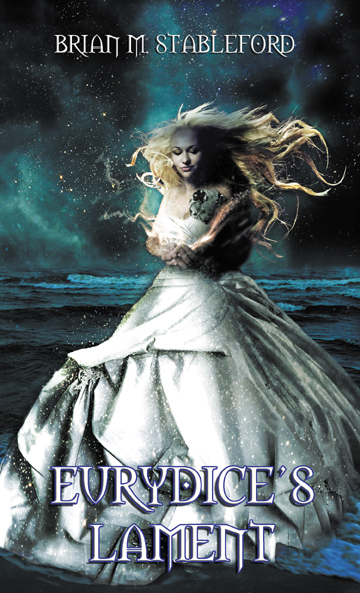Review by Sally Startup
On the fictional island of
Mnemosyne lives Axel Rathenius, a spectacularly creative portrait painter.
Some people even suspect him of being a sorcerer, although he maintains
he is really a skeptic. Axel has been commissioned to paint a triptych
illustrating the career of the mythical Orpheus, but is finding it difficult
to complete. Gradually, events begin to draw Axel further and further
into a mystery. Being an artist of considerable experience, however, he
knows when to allow such a work of art to unfold of its own accord, without
imposing his own will too forcefully.
This sequel to The Wayward
Muse begins with the arrival of some newcomers to the island, where they
will meet characters from those earlier stories. Hecate Rain, Vashti Savage,
Myrica Mavor and Nicodemus Rham are involved, as is the Mother Superior
of the druidic convent of the Sisters of Shalimar. The Duc de Dellacrusca
embraces the role of evil mastermind. Axel is an even more compassionate
and understanding narrator than before, in spite of claiming to value
art above all else.
The setting is a fictional
world in which Rome has never fallen to the Barbarians. This allows for
such delightful touches as a trade agreement between the Empire and the
Iroquois Federation; and the likelihood that any number of wars have been
prevented by the Empire’s policy of religious tolerance. Nevertheless,
there are many points of contact with our own world. Mnemosyne is caught
up in a feud between two long-standing ‘secret’ organisations,
the Orpheans and the Dionysians. Their enmity has led to the misinterpretation
of history by both sides. Resolution may depend on hearing the voices
that were excluded, even if such voices can only use the language of sighs.
Axel Rathenius willingly accepts
the role of art-mystery sleuth, once again. Through his narration, the
novel’s plots and themes become interwoven as he comes to understand
what may be happening. He provides enlightening and thought-provoking
commentary. Axel’s explorations of the effects of other characters’
beliefs and superstitions are utterly fascinating. He also makes some
astute and important judgements about the psychological nature of villainy.
His observations of Hecate, Myrica and Vashti, and of the newcomers (the
artist Charles Parenot and his unconventional family), provide wonderfully
vivid verbal portraits of his subjects’ behaviour and their possible
motivation. As he structures and narrates the tale, he is aware that his
artistic decisions have important implications, although he does not always
consciously direct them.
This novel is not particularly
long, but it is densely filled with meaning. A many-layered tale of hope,
it deserves reading and re-reading. Set in an imagined world somewhere
parallel to our own nineteenth-century, it speaks about future possiblities
that could affect anyone.
|


